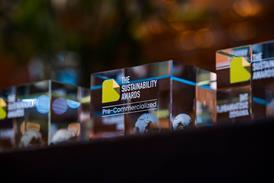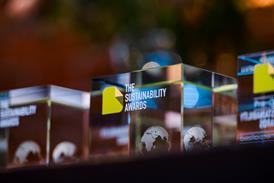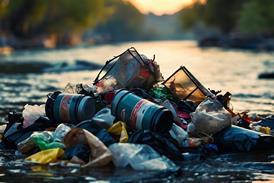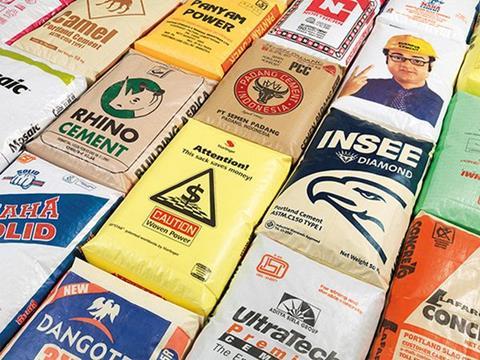
Cement packaging is a significant factor for cement producers and sellers regarding product protection, shelf appearance, cost margins, and sustainability targets. An independent study compared the environmental impact of paper cement sacks, sewn cement sacks made of recycled polypropylene tape fabric, and hot-air welded AD*STAR cement sacks made of coated polypropylene tape fabric.
Authors: Markus Grabenweger, Sigrid Eder, Starlinger & Co. Ges.m.b.H.
The Life Cycle Assessment (LCA), carried out by the German PE INTERNATIONAL AG (now thinkstep AG) and commissioned by the Austrian machinery supplier Starlinger & Co. Ges.m.b.H., compared sewn sacks made in China and kraft paper sacks made in Saudi Arabia with AD*STAR sacks which were produced in both countries respectively. In the course of the study the entire life cycle of the cement sacks, i.e. from sack production and transport to the cement plant, the use phase of the sacks, to their endof-life phase, was reviewed. All analysed sacks had a filling capacity of 50 kg cement.
In China, sewn woven sacks made of polypropylene tape fabric are the most widely used packaging for cement. The sacks are manufactured including varying shares of recycled polypropylene as input material, sometimes up to 100 %. The polypropylene-coated tubular fabric is cut and sewn mostly by hand in sack factories. The recycled material used to produce the sacks is in most cases severely degenerated – it has been re-used various times, and often contains high quantities of mineral fillers from previous applications.
This means the sack fabric is rather brittle and breaks easier. To increase the sack strength, the fabric weight must be increased. In addition, the sewing process further weakens the material by up to 50 per cent. Two- and three-layer kraft paper sacks in block bottom shape are the predominant cement packaging on the market in Saudi Arabia. Although the sacks are mostly produced in the country, the raw materials for the sacks – i.e. paper and glue – have to be imported from Europe. To achieve the necessary strength, the sack weight is comparatively high (compare Table 1). Still, sack rupture occurs frequently after dropping, sliding on uneven surfaces, or due to humidity. AD*STAR sacks are block bottom valve sacks made of woven and coated polypropylene tape fabric. The sack bottom and top are closed in a special conversion process by means of hot air welding. The use of high-grade virgin polypropylene for fabric production and the tight sealing of the sack bottom and top ensure low breakage even during rough handling, dropping, or after contact with water. AD*STAR sacks are produced and used all over the world and are a wide-spread cement packaging in many African and South East Asian countries.
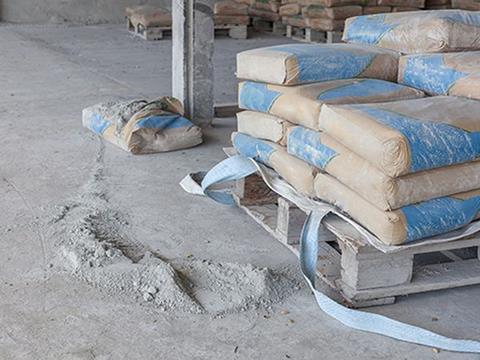
Life cycle phases of the cement sacks under study
For the life cycle assessment, the CML (Centrum voor Milieuwetenschappen at Leiden University, NL) impact assessment methodology framework was selected. The impact categories used in this study represent internationally accepted LCIA indicators (see Table 2). One ton of cement of average quality was taken as functional unit for the study. All primary and secondary data were collected specific to the countries under study. Where country specific data were unavailable, proxy data were used. Geographical representativeness is considered to be good. All primary data were collected or assumed for the year 2013.
The life cycle phases of the paper sacks, sewn woven polypropylene sacks, and welded woven AD*STAR sacks were defined as:
Production of sacks including the transport of raw materials to the production plant;
Transport of sacks to the cement plant (purchaser);
Use phase of sacks – also includes sack breakage and other losses in the entire logistics chain (including a specified recovery rate of cement at the plant and during transport), as well as production of cement to compensate for losses.
The cement datasets including all upstream environmental burdens were regionalised for Chinese and Saudi Arabian conditions.
End-of-life of sacks – final treatment of cement sacks. Analysis based on twenty 50 kg sacks needed for the packaging of one metric ton of cement, plus reproduction of broken sacks during filling. Net flows, e.g. emissions from uncontrolled incineration are also considered.
End-of-Life Credits – electricity and thermal energy production by means of incineration, substitution potentials resulting from the net flow of recyclable materials in the end of life of cement sacks. The end-of-life credits were adapted to the regional situation in order to represent realistic conditions.
Energy supply – the electricity grid mixes used in the production phase were regionalized according to the energy supply situation in China and Saudi Arabia.
Low breakage rates - smaller CO2 equivalent
The term breakage rate refers to the percentage of cement lost due to sack breakage in the entire life cycle of the respective sacks. The study showed that the low breakage rates in the course of the use phase are a decisive factor for the positive results of AD*STAR sacks. As no reliable data were available from official sources, and in-depth product knowledge is needed for the determination of an applicable breakage rate for the different types and qualities of sacks during their entire life cycle, the study included interviews with experts from the local packaging and cement industries in China and Saudi Arabia.
This ensured that the estimations for the breakage rates assessed are realistic and have a valid basis. A breakage rate of 1 per cent was assumed for AD*STAR sacks, 3.8 per cent for woven PP sacks with 50 per cent of recycled content, 4.4 per cent for woven PP sacks with 100 per cent recycled content, 2.8 per cent for 2-layer paper sacks, and 2.3 per cent for 3-layer paper sacks.
The study applies the breakage rates considering that 90 per cent of the cement lost at the plant, as well as 20 per cent (Saudi Arabia) and 50 per cent (China) lost during transport and handling is recovered. Regional differences of the AD*STAR sacks between Saudi Arabia and China are considered in the study with a number of factors, of which the regionalisation of the cement datasets, the electricity grid mix, upstream supply chain of PP, and the end-of life scenarios represent the most important.
For the production of the AD*STAR sacks analysed in the study, 100 per cent virgin material was used both in China and Saudi Arabia. Due to the special production process AD*STAR sacks are extremely robust despite their very low weight which also accounts for raw material savings during production. Because of the strength and resistance of AD*STAR sacks the cement losses caused by sack breakage and other losses are below 1 per cent in the entire use phase, while for paper sacks and sewn woven sacks the cement losses lie between 2.3 per cent and 4.4 per cent. These comparatively high rates are caused by the rough handling and low automatization in the logistic chains, especially in China. In many cases sacks are loaded, unloaded and stacked by hand multiple times until reaching the final destination. If the more robust AD*STAR sacks are used, less cement is lost and must be replaced, and less packaging is needed. Consequently, less greenhouse gases are produced.
China: low quality impairs performance
In China, the world’s biggest cement producer, around 20 billion sewn cement sacks made of polypropylene tape fabric with recycled content are produced per year. In the study, sewn coated polypropylene sacks made of 50 per cent virgin material mixed with 50 per cent recycled material, and sacks made of 100 per cent recycled material were analysed because these are currently the most widely used sack types for packaging cement in China. The sacks have an extremely thin coating and are sometimes partially not coated, which reduces their shelf life. Together with non-existent coating, the sewn top and bottom seams account for increased cement losses during the entire transport chain.
The study concludes that AD*STAR sacks produced in China create lower environmental burdens in each impact category than the sewn sacks made of polypropylene with shares of recycled content. The latter show significantly higher impacts for ozone depletion, blue water consumption, land occupation and primary energy from renewable resources than AD*STAR sacks.
Regarding the global warming potential, the environmental impact during the use phase of the sacks is strongly dependent on the breakage rate. With breakage rates of up to 4.4 per cent the sewn polypropylene sacks with recycled content have a substantially higher environmental impact than AD*STAR sacks. More cement is lost during the use phase and has to be compensated by additional production. AD*STAR sacks, in turn, are extremely robust due to the special production process and have realistic breakage rates below 1 per cent in their entire life cycle.
The sensitivity analysis of the breakage rates during the use phase showed that the global warming potential of both types of sewn polypropylene sacks would still be higher even if they had the same breakage rate as AD*STAR sacks.
Changing over to AD*STAR sacks would not only reduce CO2 emissions caused during production and thus relieve the environment; it would also contribute to the automatization of the entire cement filling and transporting chain. Currently, the manufacture and handling of the sewn woven PP sacks involves a lot of manual activities – starting with the sewing of the sacks in the production phase and the resulting size differences that cause problems on automatic filling lines, from putting them onto the spout during the cement filling process, to stacking, storing and transporting. Considering the current investments in modernizing the Chinese cement sector, the use of AD*STAR sacks which are produced automatically on sack conversion lines and allow fully automated handling of the packaged cement would seem a prudent step.
Saudi Arabia: Import of kraft paper drives up environmental impact
In Saudi Arabia, one of the biggest producers and exporters of plastic granulates worldwide, paper and glue imported from Europe are used for the production of cement packaging. Mostly, two- and three-layer kraft paper cement sacks can be found on the market; these sack types were also used for analysis in the study The global warming potential of both AD*STAR sacks and paper sacks in Saudi Arabia is dominated by emissions during the use phase of the product, which is, as discussed before, strongly dependent on the breakage rate of the cement sacks.
As the paper sacks show higher breakage rates than AD*STAR sacks – 2 to 3 per cent are very common, under rough conditions they can be even higher – more cement is lost, resulting in a higher impact. The production phase represents the second largest driver, in this case especially with regard to the AD*STAR sacks, while the production phase of paper sacks has less impact. Transportation contributes more to the global warming potential of paper sacks than to the AD*STAR sacks produced in Saudi Arabia because the raw materials for the paper sacks have to be shipped. In total, the two-layered paper sacks produced in Saudi Arabia perform worst in terms of global warming potential, while the AD*STAR sacks show the lowest values.
Ozone depletion, eutrophication, blue water consumption, land occupation as well as renewable primary energy show higher values for the paper sacks in comparison to AD*STAR sacks. Only the non-renewable primary energy demand shows lower potentials for paper sacks than for AD*STAR sacks. This is because the polypropylene used for the production of AD*STAR sacks represents a non-renewable resource, whereas kraft paper that serves as input for the paper sacks is based on renewable resources. For Saudi Arabia, switching over to the more robust AD*STAR sacks would not only prevent the loss of countless tons of cement caused by sack rupture, but also greatly reduce raw material input for sack production and avoid long transport routes. In addition, the entire value created by both raw material and sack production would remain within the country.
Conclusion
The study clearly show that AD*STAR sacks have lower global warming potential than paper sacks or sewn PP sacks. For both China as well as Saudi Arabia, AD*STAR sacks do not only show the lowest values regarding global warming potential (also known as carbon footprint), they are also the environmentally friendlier packaging in terms of acidification potential (acid rain), ozone depletion potential, photochemical ozone creation potential (causes summer smog), as well as energy and fresh water consumption.
The study was reviewed by an independent review panel, consisting of representatives from the internationally operating German inspection company Dekra, which held the chairmanship of the panel, as well as Lafarge France and Canada, Dr. Werner Environment & Development from Switzerland, and the Austrian trading company Sack Agency. “With this comparative life cycle assessment on cement sacks Starlinger & Co. Ges.m.b.H. has presented a carefully researched and detailed study in accordance with the standards EN ISO 14040 and EN ISO 14044. In the course of the critical review the life cycle analysis experts of the review panel have surveyed and discussed the study and the data and stipulations it is based upon in depth with the authors of the life cycle analysis. Based on this comprehensive examination of the study I consider its results and conclusions sound“, said Dr. Frank Werner, Dr. Werner Environment & Development, Zurich.
More info:

